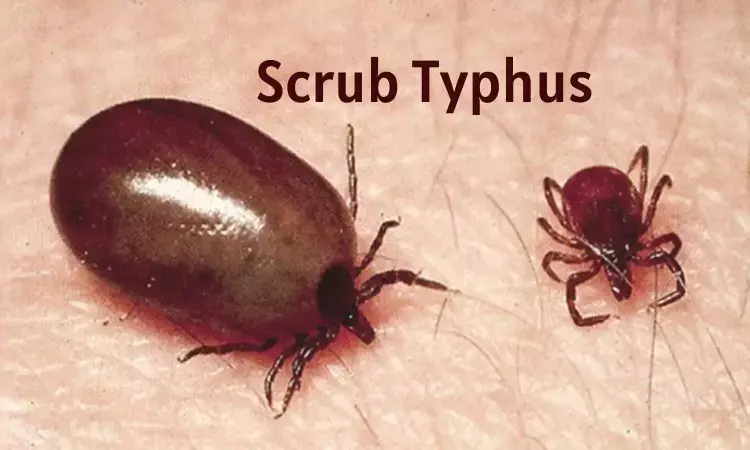- Home
- Medical news & Guidelines
- Anesthesiology
- Cardiology and CTVS
- Critical Care
- Dentistry
- Dermatology
- Diabetes and Endocrinology
- ENT
- Gastroenterology
- Medicine
- Nephrology
- Neurology
- Obstretics-Gynaecology
- Oncology
- Ophthalmology
- Orthopaedics
- Pediatrics-Neonatology
- Psychiatry
- Pulmonology
- Radiology
- Surgery
- Urology
- Laboratory Medicine
- Diet
- Nursing
- Paramedical
- Physiotherapy
- Health news
- Fact Check
- Bone Health Fact Check
- Brain Health Fact Check
- Cancer Related Fact Check
- Child Care Fact Check
- Dental and oral health fact check
- Diabetes and metabolic health fact check
- Diet and Nutrition Fact Check
- Eye and ENT Care Fact Check
- Fitness fact check
- Gut health fact check
- Heart health fact check
- Kidney health fact check
- Medical education fact check
- Men's health fact check
- Respiratory fact check
- Skin and hair care fact check
- Vaccine and Immunization fact check
- Women's health fact check
- AYUSH
- State News
- Andaman and Nicobar Islands
- Andhra Pradesh
- Arunachal Pradesh
- Assam
- Bihar
- Chandigarh
- Chattisgarh
- Dadra and Nagar Haveli
- Daman and Diu
- Delhi
- Goa
- Gujarat
- Haryana
- Himachal Pradesh
- Jammu & Kashmir
- Jharkhand
- Karnataka
- Kerala
- Ladakh
- Lakshadweep
- Madhya Pradesh
- Maharashtra
- Manipur
- Meghalaya
- Mizoram
- Nagaland
- Odisha
- Puducherry
- Punjab
- Rajasthan
- Sikkim
- Tamil Nadu
- Telangana
- Tripura
- Uttar Pradesh
- Uttrakhand
- West Bengal
- Medical Education
- Industry
Mizoram faces Scrub Typhus surge, warn health experts

Aizawl: A public health entomologist from the Health & Family Welfare Department's Integrated Disease Surveillance Programme (IDSP) has warned about the growing spread of scrub typhus across Mizoram, which is now reaching endemic proportions.
Since 2012, government healthcare facilities alone have recorded 913 confirmed cases of scrub typhus, with 34 deaths.
According to the UNI report, the entomologist has further warned that the actual number of cases could be nearly double if private healthcare facility data were included.
The first cases of scrub typhus were identified in Mizoram during the gregarious flowering of the 'Mautak' (Melocanna baccifera) bamboo species between 2006 and 2008, which led to a dramatic increase in the rodent population.
Rodents, particularly rats, are the primary carriers of the disease, which is caused by the bacteria Orientia tsutsugamushi. The disease is transmitted to humans through the bites of trombiculid mites, which feed on infected rats.
While scrub typhus was initially confined to rural areas, the situation has changed significantly. Recent reports indicate that 30.09% of all scrub typhus cases now come from urban areas, specifically 41 localities within the Aizawl Municipal Corporation (AMC), reports UNI.
The entomologist emphasized that, in addition to malaria, scrub typhus has now emerged as a major public health threat in Mizoram.
The outbreak has led to increased concerns about the role of rodents in the spread of the disease. In response, the faculty members of the Zoology Department at Pachhunga University College issued a public warning on Wednesday, urging people to avoid direct contact with rats, both dead and alive.
This follows a recent spike in rodent population linked to the flowering of the ‘Rawthing’ (Bambusa tulda) bamboo species this year, which has once again triggered a surge in the rodent numbers.
The experts specifically cautioned that touching live or dead rodents could result in scrub typhus infection, which remains highly contagious.
Also Read:West Bengal opens 44 sentinel labs for Scrub Typhus
Kajal Rajput joined Medical Dialogues as an Correspondent for the Latest Health News Section in 2019. She holds a Bachelor's degree in Arts from University of Delhi. She manly covers all the updates in health news, hospitals, doctors news, government policies and Health Ministry. She can be contacted at editorial@medicaldialogues.in Contact no. 011-43720751


